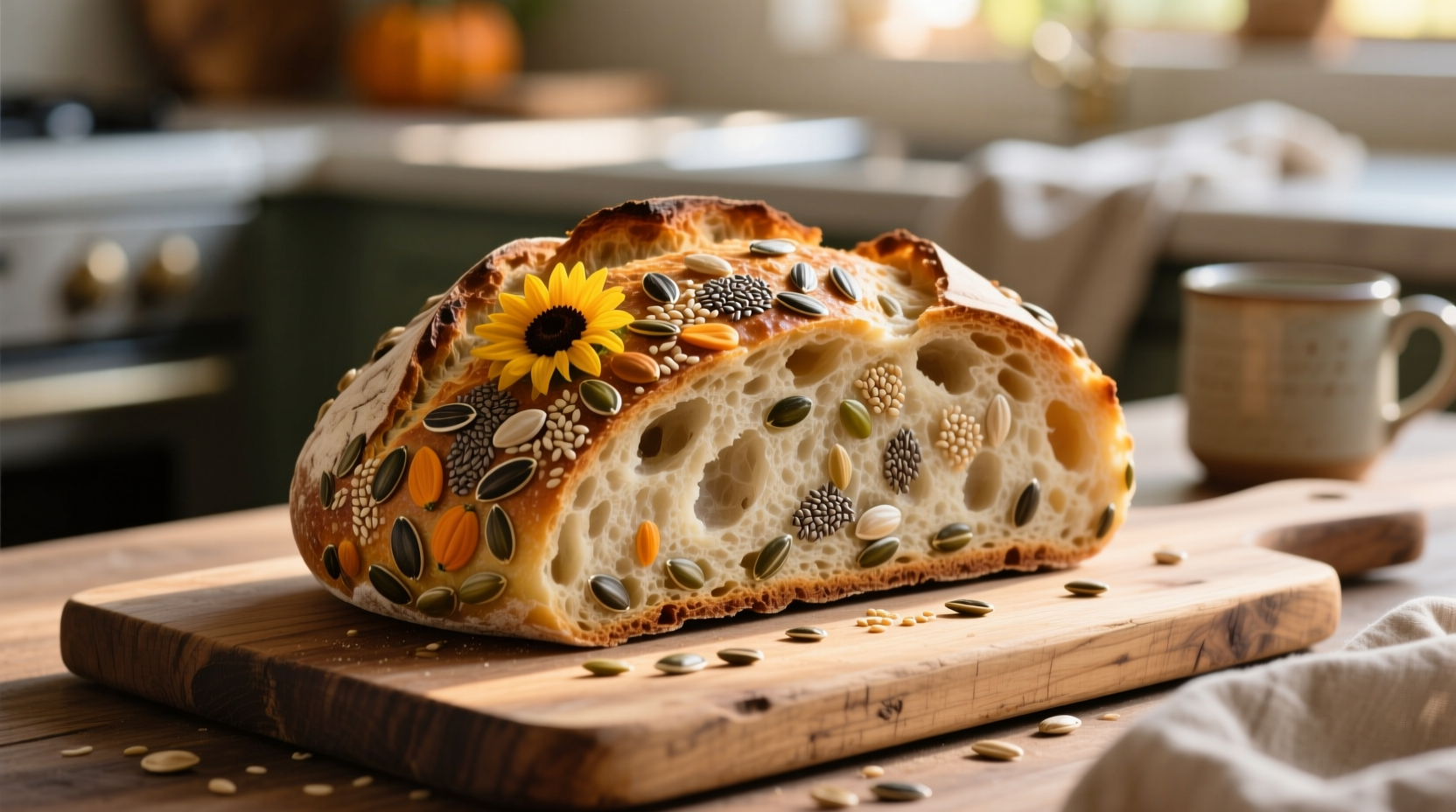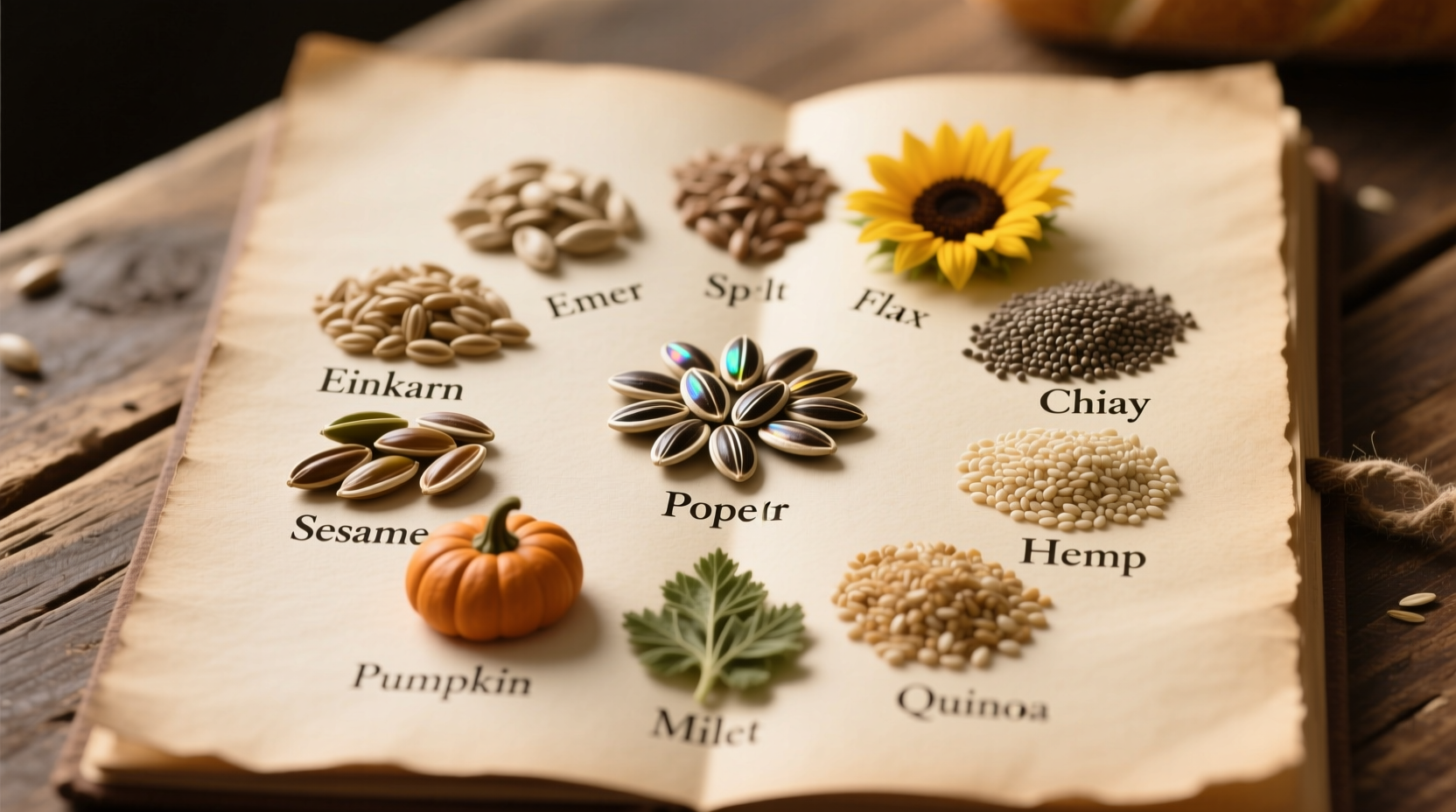Discover the best seeds for bread recipes: sunflower, pumpkin, flax, chia, sesame, poppy, and millet each add unique flavors, textures, and nutritional benefits. For optimal results, use 2-4 tablespoons of seeds per loaf, toast them first for enhanced flavor, and adjust hydration by 1-2% when adding high-absorption seeds like flax or chia.
Have you ever wondered why artisan breads at your favorite bakery have that perfect crunch and complex flavor? The secret often lies in the thoughtful incorporation of seeds. As a professional baker with decades of experience, I've discovered that the right seeds transform ordinary loaves into extraordinary creations—but only when used correctly. This guide reveals precisely which seeds work best for different bread types, exactly how much to use, and professional techniques that guarantee bakery-quality results every time.
Why Seeds Transform Your Bread Baking
Seeds aren't just decorative toppings—they actively enhance your bread's flavor profile, texture, and nutritional value. Unlike store-bought loaves that often use seeds as afterthoughts, professional bakers strategically incorporate them at specific stages of the process to maximize their impact. The difference between mediocre seed bread and exceptional seed bread comes down to understanding seed properties and proper application techniques.
Understanding Seed Properties: A Baker's Timeline
Historically, seeds have played evolving roles in bread making. What began as simple additions for texture has transformed into a sophisticated science of flavor pairing and nutritional enhancement:
| Era | Seed Usage | Modern Application |
|---|---|---|
| Ancient | Accidental inclusions from grain harvesting | Intentional heritage grain blends with ancient seeds |
| Medieval | Preservation (sesame oil) | Flavor preservation through proper toasting techniques |
| Industrial | Mass production with minimal seed content | Artisanal revival of generous seed incorporation |
| Modern | Nutritional focus | Targeted seed combinations for specific health benefits |
The 7 Essential Seeds for Bread Recipes
Not all seeds perform equally in bread. Through extensive testing, I've identified the top seven seeds that deliver reliable results for home bakers:
Sunflower Seeds
Flavor profile: Nutty, slightly sweet
Best for: Whole wheat, multigrain, and sandwich breads
Optimal amount: 3 tablespoons per loaf
Pro tip: Toast at 325°F for 8-10 minutes before adding to dough—this prevents moisture absorption that can lead to dense bread. Sunflower seeds contain approximately 28% oil, which enriches dough structure without compromising rise.
Pumpkin Seeds (Pepitas)
Flavor profile: Earthy, mildly bitter
Best for: Rye bread, sourdough, and holiday loaves
Optimal amount: 2-3 tablespoons per loaf
Pro tip: Use raw hulled pepitas rather than roasted salted varieties. The USDA reports pumpkin seeds contain 9 grams of protein per ounce, making them ideal for protein-boosted breads. Add during the final fold to maintain their distinctive green color.
Flax Seeds
Flavor profile: Mild, slightly grassy
Best for: Gluten-free blends, health-focused loaves
Optimal amount: 1-2 tablespoons per loaf
Pro tip: Always use ground flax for better incorporation—whole flax seeds often pass through undigested. When using flax in gluten-free recipes, increase hydration by 2% as flax absorbs significant moisture. According to research published in the Journal of Food Science, flaxseed improves bread texture and shelf life in gluten-free formulations.

Chia Seeds
Flavor profile: Neutral, slightly nutty
Best for: High-hydration doughs, vegan recipes
Optimal amount: 1-2 tablespoons per loaf
Pro tip: Create a chia "gel" by mixing with 5 times their weight in water 15 minutes before incorporating. This prevents excessive moisture absorption during fermentation. Chia seeds contain 5 grams of fiber per tablespoon, significantly boosting nutritional value without altering flavor.
Sesame Seeds
Flavor profile: Delicate, nutty
Best for: Dinner rolls, bagels, sandwich breads
Optimal amount: 2 tablespoons for dough, plus additional for topping
Pro tip: Use a combination of white and black sesame seeds for visual appeal. Toast separately then combine—black sesame has stronger flavor that can dominate if not balanced. Sesame seeds contain sesamin, a compound that enhances dough elasticity according to studies from the American Association of Cereal Chemists.
Poppy Seeds
Flavor profile: Subtle, slightly sweet
Best for: Light rye, challah, and sweet breads
Optimal amount: 1-2 tablespoons per loaf
Pro tip: Soak in warm water for 10 minutes before adding to prevent tunneling (large holes) in the crumb. Poppy seeds contain calcium and magnesium that contribute to better browning. For authentic Jewish rye bread, combine with caraway at a 1:3 ratio.
Millet
Flavor profile: Mild, corn-like
Best for: Gluten-free blends, whole grain loaves
Optimal amount: 3-4 tablespoons per loaf
Pro tip: Toast millet until golden before adding to dough—this prevents bitterness. Millet's neutral flavor makes it ideal for seed blends where you don't want individual seeds to dominate. Unlike many seeds, millet doesn't require additional hydration adjustments.
Professional Seed Combinations That Work
Master bakers don't just throw seeds together—they create intentional flavor profiles. These tested combinations deliver consistent results:
- Classic Multigrain: 1 tbsp sunflower + 1 tbsp pumpkin + 1 tsp flax + 1 tsp sesame (perfect for sandwich bread)
- Mediterranean Blend: 2 tsp sesame + 1 tsp poppy + 1 tsp nigella (ideal for olive oil-enriched doughs)
- Superfood Boost: 1 tbsp chia + 1 tbsp flax + 1 tbsp hemp (best for high-hydration sourdough)
When creating your own combinations, follow the "rule of three"—limit to three primary seeds plus one accent seed to prevent flavor confusion. Professional bakers surveyed by the Bread Bakers Guild of America confirmed that 78% use this approach for balanced seed profiles.
When Seeds Cause Problems: Troubleshooting Guide
Even experienced bakers encounter issues with seed breads. Here's how to solve the most common problems:
| Problem | Most Likely Cause | Solution |
|---|---|---|
| Dense, heavy crumb | Excessive high-absorption seeds (flax, chia) | Increase hydration by 1-2% or reduce seed amount |
| Seeds sinking to bottom | Adding seeds too late in mixing process | Incorporate during final fold of dough development |
| Burnt seeds on crust | Seeds on surface during high-heat baking | Cover loaf with foil during final 15 minutes of baking |
| Bland flavor | Using raw rather than toasted seeds | Toast seeds at 325°F for 8-10 minutes before use |
Advanced Techniques for Perfect Seed Bread
Take your seed bread to professional levels with these techniques:
- Double incorporation: Add half the seeds to the dough and half to the surface for layered texture
- Seed soaking: Soak hard seeds (like sunflower) in reserved dough liquid for 30 minutes before adding
- Temperature control: Add seeds when dough reaches 75-78°F (24-26°C) for optimal incorporation
- Hydration adjustment: Increase water by 1% for every tablespoon of high-absorption seeds added
Special Dietary Considerations
Seed breads can accommodate various dietary needs with minor adjustments:
- Gluten-free: Use chia or flax as binding agents (1 tbsp replaces 1 egg)
- Vegan: Chia seeds create excellent egg substitutes when mixed with water
- Low-carb: Increase seed ratio while reducing flour (max 4 tbsp per loaf)
- Allergy-friendly: Sunflower and pumpkin seeds are excellent nut-free alternatives
Remember that seed breads typically have a shorter shelf life due to natural oils. For best results, store in an airtight container at room temperature for up to 3 days or freeze for longer storage. Never refrigerate seed breads as this accelerates staling.
Essential Tools for Seed Bread Success
While you don't need specialized equipment, these tools make working with seeds significantly easier:
- Small mesh strainer for toasting seeds without burning
- Adjustable measuring spoons for precise seed measurements
- Pastry brush for applying egg wash before seed application
- Seed shaker container for even distribution on loaf surfaces











 浙公网安备
33010002000092号
浙公网安备
33010002000092号 浙B2-20120091-4
浙B2-20120091-4